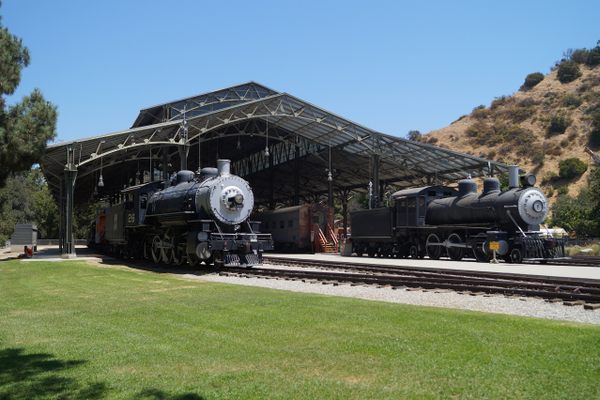About
Capturing a lifestyle that no longer exists in the modern world, the Camp 5 Museum operates and maintains a turn of the century logging camp that can only be reached by a period locomotive that has also been kept on the rails by the museum.
Visitors board the Lumberjack Steam train at the Soo Line Depot in town. Tickets for the train ride can be purchased inside the 1880's depot, just as people did at the turn of the century. A ticket on the Lumberjack Steam Train takes you through the Wisconsin forest and out to "Camp 5", the site of an old logging camp which later became the site of the Lumber Company Farm.
On site you’ll find some of the original buildings such as the old slaughter house (no longer in use), the old hog barn which is now a petting corral and the blacksmith shop which now part of the museum. In the distance is the old boarding house and several original barns, as well as the "Woods Boss's House."
Be sure to stop and watch a blacksmith pound and shape your very own good luck "mini" horseshoe over the original forge, as well as stop and watch the "Northwoods Saga" video in the video center. The video gives a short history of logging as well as showing you modern logging techniques. After viewing the video, you will understand the economic and historic importance of logging in Wisconsin's past and present.
The museum is full of artifacts that bring the turn of the century camps back to life. Tools such as the cumbersome two man saws, cruiser equipment, and stamp hammers used by the lumberjacks who struggled in the coldest winters to harvest trees for a growing nation. Framed pictures on the walls depict some of the most arduous tasks performed in daily life and antique household appliances speak to the labor intensiveness of the day. Sleighs and buffalo blankets can be found next to old dugout canoes. Collections of original script and coins can be found next to the original account ledgers. You can learn how draft horses managed to pull huge sleds piled thirty feet high with logs, and other methods used to transport logs to the railroads and rivers.
After viewing the hard life of the lumberjack, no one will be surprised that the most important men in the logging camps were the cooks, who would spend all day preparing the meals for the camp. See Paul Bunyan size cooking tools including frying pans three feet across. Imagine using them to cook a breakfast of flapjacks, eggs and sausages, cleaning up afterwards and then getting started on preparing that night’s soup.
Related Tags
Published
April 22, 2014





















